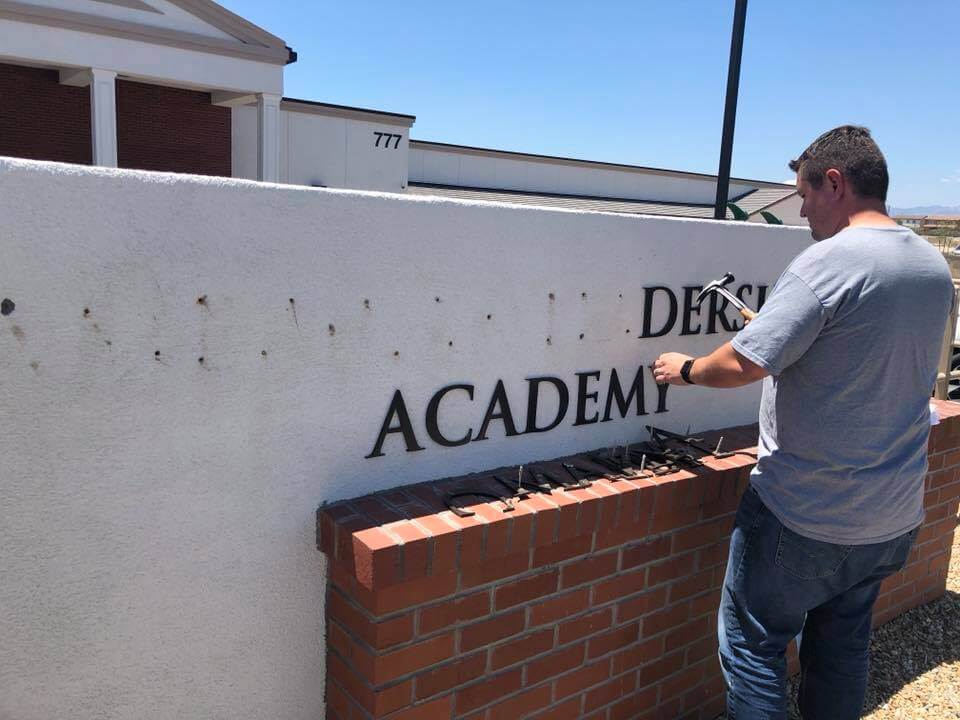Twenty-one states have capped the number and growth of charter schools. Nevada should join them.
Four years ago, the state spent $254 million on charter schools. This year, according to the director of the State Public Charter School Authority, the state expects to spend more than $340 million.
A little more than 28,000 students were enrolled in charters in 2015-16. Last year, the enrollment was more than 38,000 — a 36 percent increase in a mere two years.
In 2014-15, there were 39 charter schools in the state. When four more campuses open within the next couple of weeks, the number of charters will be pushing five dozen.
A recent report found that last year — for the second year in a row — Clark County had the most overcrowded classrooms in the country.
And in charter schools?
Classroom size increases have been hot stories in many local news broadcasts. It is a nice reminder knowing that all Pinecrest schools have capped grade level enrollments! Pinecrest Inspirada is happy to announce that we just released a few more 7th and 8th grade seats.
— Pinecrest Inspirada (@PAN_Inspirada) July 28, 2018
Pinecrest, which has four campuses in Southern Nevada, is run by Academica, a private company headquartered in Florida. Academica has a total of 18 campuses in the state. Nearly half of Nevada’s charter students — 18,000 — are enrolled in a school managed by Academica. Charter monitoring and accountability in Nevada, as in the nation, is lax, and the state has no way of knowing how much public money spent with charter companies flies out of state to enrich the industry.
Every traditional public school in Clark County had to make budget cuts earlier this year. Charter schools in Clark County, including the multiple schools operated by Academica and other for-profit private companies, didn’t, because they’re separate from the Clark County School District.
As dysfunctional as elected school boards can be, public school districts have them, and they are, at least technically, accountable to the public. Charter school boards are not elected, but appointed. Often as not, the entity they are most accountable to is the company that manages the charter, not the public. Records from charter schools are poorly kept, and transparency can be, and often is, a joke.
When charter school marketing successfully attracts students and those students relocate from traditional public schools, they take per student state spending with them, leaving traditional public schools with higher percentages of English language learners and special education students who tend to a) cost more, and b) not be recruited to attend charter schools.
Charter school officials and advocates are quick to point out that charter schools are “public” schools. The one, and perhaps only, thing that is truly and consistently public about charters is that aforementioned $340 million the state will spend on charters this year. Charter companies, their consultants, their real estate partners, their construction and maintenance companies, their vendors, their Wall Street financiers — all are ultimately paid with public money.
The charter industry in Ohio, Pennsylvania, Florida, Arizona and elsewhere — including Nevada — have been plagued by scandals, and not just the much-maligned online schools.
And charter academic results are mixed, at best.
Charter schools started in 1992 in Minnesota. The idea was that public school teachers could form a new school where they could try stuff out, see what works, and share their findings with their colleagues in the public school system. For much of the ensuing quarter century, charters have benefited from a fairly benign, feel-good reputation — not as risky or off-putting as privatization, and a place for innovation and new thinking. So yay!
Nevada, ever hoping to at least nod toward innovation if not to, well, innovate, adopted legislation authorizing the creation of charters in 1997, and the schools have enjoyed mostly bipartisan support ever since.
But over that time, the nature and mission of charters has shifted in Nevada, as nationally. No longer initiated and supervised by public school districts, charter schools are initiated by private sector operators, under the auspices of charter-friendly state charter authorizing agencies. Academica isn’t in business to test and share pedagogical findings with public schools. Academica and other players in today’s charter industry are in business to make money.
The spirit of the charter movement has also transformed. Left far behind is the notion of public school do-gooders innocently trying to make the world a better place. The movement now is driven by the ideology of market forces and competition. Where once there was an appeal to improve public education for everyone, the charter movement feeds on exceptionalism and exclusivity — why, you’re not going to let your precious angel be stuck in an icky old regular public school, are you? Your gifted little darling needs every possible edge to prepare her to claw and fight her way to the top. Public schools? They’re for the rabble.
It is (as I’ve written elsewhere) a defeatist approach to education, a surrender to the idea that public education has failed, that nothing can be done, and the only option — for the right people, anyway — is to get their children out of public schools and into something else. As for all the children left behind, well, that’s their problem.
The for-profit status of many charters, the lack of accountability, the mixed academic performance, the siphoning of money from public schools — all those factors and more are starting to come to the public’s attention and change public attitudes. For years, charters have enjoyed a solid foothold of support in the Democratic Party, especially through the well-funded and influential national group Democrats for Education Reform. Now rank and file Democrats are rejecting the group and its agenda.
Education collective bargaining organizations, driven in no small part by pro-private education policies promoted by the Trump administration and Education Secretary Betsy DeVos, are also taking a new and more skeptical approach to charter schools. The Nevada State Education Association frankly has never strongly or vocally challenged Nevada’s proliferation of charter schools. But when asked by email if the NSEA supports a cap on charter school growth, the organization’s president Ruben Murillo responded “NSEA would support a cap on charter schools. While charter schools receive public funding and are considered public schools, they do not have to meet the same standards to which non-charter public schools are held. To expand charter schools for the sake of expansion, without a plan for success, can lead to failure, profiteering and a disservice to our students and the communities in which they live.”
Charter schools, the charter movement and the charter industry have grown rapidly in Nevada with almost no scrutiny and very little in the way of questioning whether that growth is a good idea. Nevada needs to put a moratorium on new charter schools until the industry and the state can prove that charters are a net positive for the state — something the industry and the state can’t prove now.
And if, after investigation and analysis, it is found that charters are not serving the public good, well, along with the 21 states that have capped charter schools, another half-dozen states don’t allow charters at all.
Our stories may be republished online or in print under Creative Commons license CC BY-NC-ND 4.0. We ask that you edit only for style or to shorten, provide proper attribution and link to our website. AP and Getty images may not be republished. Please see our republishing guidelines for use of any other photos and graphics.





Hugh Jackson